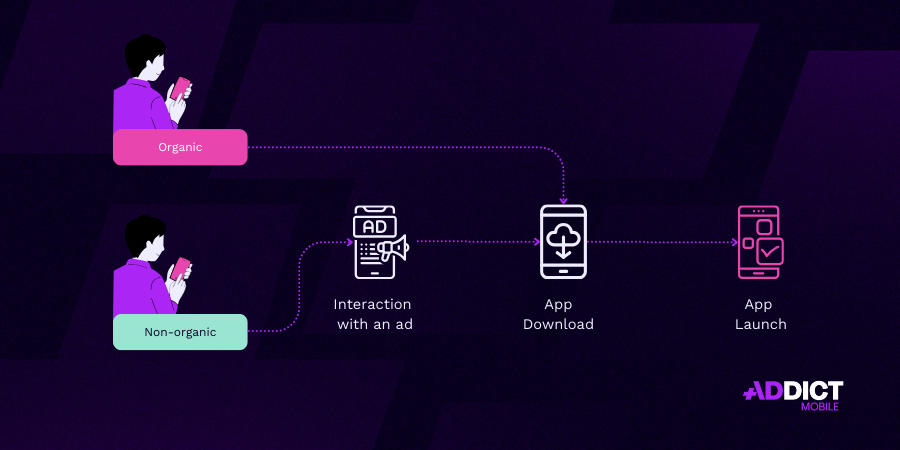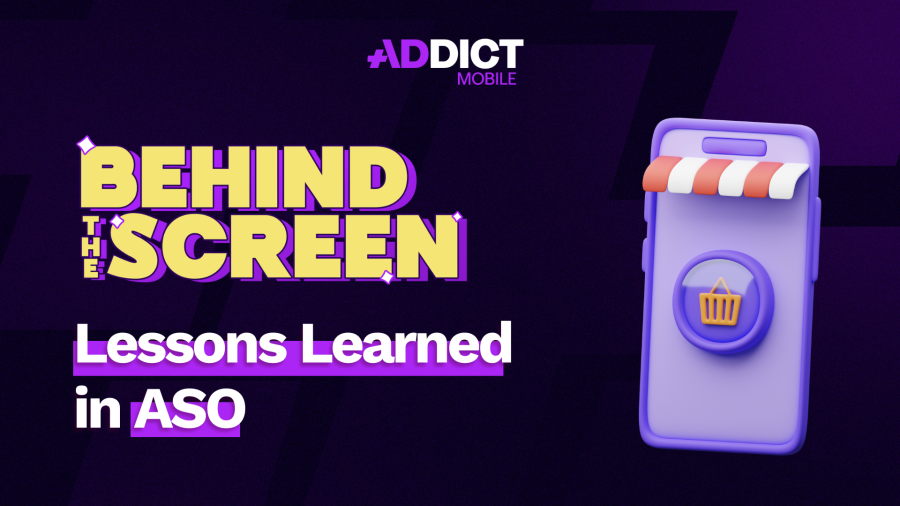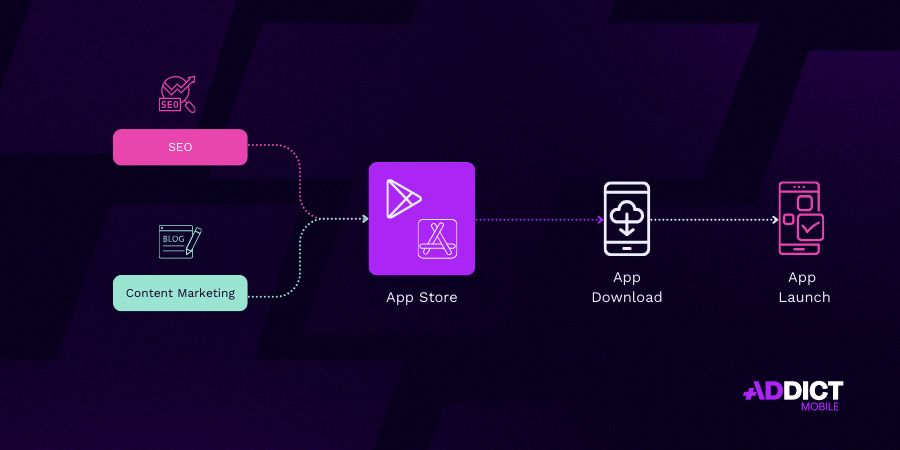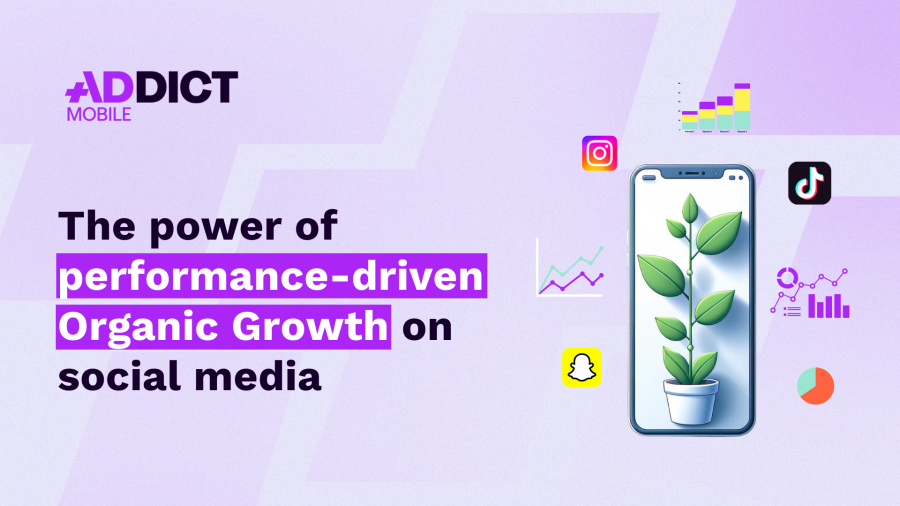Organic Installs in App Marketing: Strategies and Best Practices
Introduction
Organic installs are a key element in the success of a mobile application. Unlike paid installs, they come from users discovering the app naturally, without direct advertising investment. Understanding their impact and how to optimize them is essential for any mobile acquisition strategy.
What Are Organic Installs? How Are They Measured?
An organic install refers to app downloads that do not originate from paid advertising campaigns. These installs may result from App Store or Google Play searches, user referrals, blog articles, or mentions on social media.
To measure organic installs, several tools can be used:
- Mobile Measurement Partners (MMPs): Platforms like Adjust, AppsFlyer, and Branch analyze download sources.
- Built-in Analytics Tools: Google Analytics for Firebase and Apple App Analytics provide insights into user engagement.
- Trend Analysis: Observing installation trends without active campaigns can help estimate the impact of organic efforts.
Why Are Organic Installs Important in App Marketing?
Challenges
- Rising Advertising Costs: The cost per install (CPI) has increased significantly in recent years due to market saturation, increased competition in ad bidding, and user tracking restrictions with Apple’s App Tracking Transparency (ATT). According to an AppsFlyer study, the average CPI for an iOS app rose by over 30% after ATT implementation.
- Difficulties in Measuring Conversions: With increasing restrictions on user tracking, conversion attribution has become more complex. Marketers now rely on probabilistic attribution models or incrementality studies.
Benefits of Organic Installs
- Higher Retention and LTV: Organic users discover the app on their own, often after an active search, making them more engaged and more likely to remain active long-term.
Example: A meditation app found that its organic users had a 50% higher 30-day retention rate than users acquired via paid campaigns.
- Cost Efficiency: Investing in organic strategies reduces reliance on paid campaigns and optimizes marketing budgets.
Example: A mobile gaming publisher increased organic traffic by 20% through ASO optimization, lowering overall acquisition costs.
- Sustainable Growth: A strong organic user base indicates product-market fit and facilitates long-term acquisition through word-of-mouth and natural recommendations.
Example: The Notion app experienced significant organic growth through a community of users sharing templates and tips on social media.

Do not hesitate to contact with our teams
Addict can support you to improve your performance.
Organic vs. Non-Organic Installs: What’s the Difference?
Non-organic installs originate from paid advertising campaigns and can be attributed to specific sources. In contrast, organic installs depend on factors like store rankings, brand recognition, and user recommendations.
Example: A user might discover an app through a Facebook ad (non-organic install) or by seeing it at the top of the App Store rankings (organic install).

What Strategies Can Increase Organic Installs?
There are several methods to maximize organic installs and reduce dependence on paid channels.
ASO (App Store Optimization)
ASO is a fundamental approach to increasing organic installs through various means:
- Optimizing the title, description, and keywords: Ensure relevant and high-search-volume keywords are included.
- Enhancing visuals and preview videos: An engaging preview boosts conversion rates.
- Managing user reviews and ratings: Encourage satisfied users to leave positive feedback.

To go further, check out our 5 lessons learned in ASO to maximize your app downloads!
SEO & Content Marketing (from web to app)
SEO is a powerful tool for attracting a qualified web audience and directing them to app stores (web-to-app). Key elements include:
- Creating dedicated web pages for the app to capture traffic from Google.
- Writing optimized content to attract potential users.
- Integrating high-quality backlinks from authoritative sites to improve search rankings.

Branding
With increasing competition in the app market, a strong branding strategy helps differentiate your app. This involves:
- A strong identity and clear messaging to stand out from competitors with a unique positioning.
- Brand awareness campaigns on social media to reach the broadest audience possible.
- Influencer marketing collaborations to strengthen the connection between the app, influencers, and their engaged audience.
Localisation & Global Reach
Adapting messages based on audience location, cultural differences, and language preferences is crucial.
- Translating and localizing content for different markets.
- Multilingual SEO and international ASO: Custom Product Pages (CPPs) can create store pages tailored to specific languages or audience segments.
Example: An educational app significantly increased installs by translating its interface and content into ten different languages.
What About Attribution? How to Measure the Impact of Organic Strategies?
Attributing organic installs involves trend analysis, user cohorts, and growth modeling. Marketers can also use incrementality studies to assess their impact.
Example: A shopping app used unique promo codes to measure the impact of organic campaigns on sales.
Finding the Right Balance Between Organic and Paid Strategies
A hybrid approach combining organic and paid installs is generally recommended. Paid campaigns can boost initial visibility, while organic strategies ensure sustainable growth.
Example of a Hybrid Strategy:
- Launch with a paid campaign to build initial awareness.
- Leverage paid campaign data to optimize ASO and organic content.
- Adjust budgets based on organic channel performance.

To go further, find out how to combine organic growth with paid levers for maximum and sustainable performance.
Conclusion
Optimizing organic installs is a crucial lever for reducing acquisition costs and ensuring sustainable growth. By combining ASO, SEO, branding, and performance analysis, marketers can maximize the impact of their mobile strategy.


